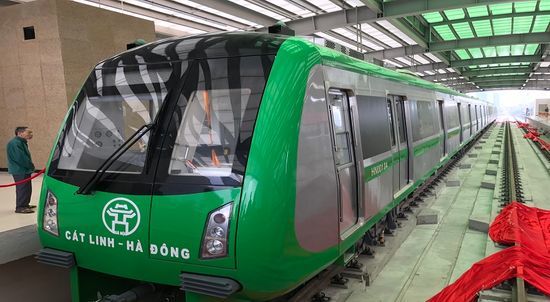 |
| Vietnam has provided maximum incentives for enterprises with foreign direct investment |
However, the tension may afford Vietnam an opportunity to improve the quality of her manufacturing capabilities, which in turn may enable her to penetrate deeper into the global value chain. The problem is whether Vietnam is successful in attracting high-quality investors.
Assoc. Prof. Nguyen Duc Thanh, head of the Vietnam Institute for Economic and Policy Research (VEPR), observes that the best companies in the U.S., Europe and Japan are not picking Vietnam but
instead have moved to other regional countries like Malaysia, Indonesia, and Thailand, where developed supporting industries and highly-qualified human resources are already in place. Also, these
countries have established a national brand as an attractive investment destination.
“Vietnam mainly receives capital from companies with medium technology and a simple workforce,” Thanh said. In other words, investors still don’t believe Vietnam is a reliable destination for tech giants.
In fact, the United States, a global technological powerhouse, invested just shy of US$180 million in Vietnam in the first six months of this year. So far, the world’s number-one economy has committed only US $10 billion into our country, versus US$300 billion she has invested worldwide.
The European Union (EU), a market known for its high-quality capital and environmental friendliness, had spent about US$24.67 billion in Vietnam by the end of 2018, a number too modest compared to her potential.
“This is too modest compared to the total Chinese investors have made in Vietnam,” said Nguyen Van Toan, vice chairman of the Vietnam Association of Foreign-Invested Enterprises (VAFIE).
On the contrary, enterprises from China and Hong Kong have proved themselves quite aggressive as far as their investment in Vietnam is concerned. Some have said Chinese investments here seem to find a storm shelter in the context of the U.S.-China trade war.
In the first six months of 2019, China remained the largest investor with her fresh capital totaling US$1.68 billion, far exceeding the traditional partners from East Asia, such as Japan and South Korea, that trailed far behind with US$1.24 billion in the case of South Korea, and US$972 million (Japan), according to the latest figures from the General Statistics Office.
China began to shift its investment to Vietnam about three years ago in the hope of benefiting from the trade agreements Vietnam has signed or about to ink.
Chinese enterprises have accelerated the injection of capital into Vietnam since late 2018, when intense trade tensions erupted between the world’s two largest economic powers.
Latest figures show that China and Hong Kong’s newly registered capital and capital contribution for share purchase amounted to US$7.5 billion in the first half of 2019, of which US$5.3 billion was sourced from Hong Kong.
Their investment projects were still mainly assembly and processing, focusing on the making of textile-garment, leather-footwear, automotive tires and electronic components.
“We think this is a sharp increase,” said Nguyen Viet Phong, head of the Department of Investment and Construction Statistics at the General Statistics Office.
It is because the total newly pledged capital and
capital contribution for share purchase of these two markets was only US$3.7 billion in 2017 and US$5.8 billion in 2018, much lower than the result in the first six months of this year.
Mainly based on the look of investors
When the country was still poor with lots of workers unemployed, it is understandable that Vietnam provided maximum incentives for enterprises with foreign direct investment (FDI).
However, at the moment, the ability to absorb domestic capital is no longer great, especially regarding the lack of labor in both quantity and quality, underdeveloped supporting industries and infrastructure, and multiple barriers when it comes to the investment environment.
Many businesses have recently complained the shortage of labor and overloaded infrastructure have made their delivery slower than planned, to the point they do not dare to receive more orders from their partners due to the fear of insufficient resources.
“These bottlenecks suggest Vietnam’s ability to absorb capital is not good,” said Can Van Luc, chief economist at the Bank for Investment and Development of Vietnam (BIDV).
With limited resources, this is now time for Vietnam to consider placing importance on high-quality capital in order to elevate her labor, technology and environment.
Vietnam has drafted a strategy for a new period of FDI attraction. Also, the Politburo’s resolution on foreign investment has specified the goal of attracting capital with “quality” and “efficiency.”
However, Toan of VAFIE believed, with the current legal system, “FDI selection will certainly be a very tough job,” since it cannot be done with a subjective mind but must adhere to a system of legal documents with very specific criteria.
“Currently, even some clear definitions—such as what high technology is, what source technology is, and how priorities should be given—are not yet available,” Toan said. “This has led to the fact that localities mainly approve projects by just ‘looking’ at the investors, not at their project quality.”
As regards FDI attraction in the coming period, Toan suggested the criteria for foreign capital attraction should be established on the basis of science. To do so, it is essential to build a qualified team who can
define what high technology is, what source technology is, and formulate specific policies for each type of production and business. “This is a difficult problem,” he stressed.
“The Government and relevant ministries—such as the Ministry of Natural Resources and Environment and the Ministry of Science and Technology—need to be involved and closely coordinate with one another to develop this set of criteria.”
Due to the lack of specific criteria and FDI screening mechanism, many Chinese-invested projects have been rejected even though they may have a good quality.
“I hope, with the new Politburo resolution, the adoption [of the FDI selection mechanism] will be better,” said Toan. “This is an important job for our country to acquire high technology, source technology and high-quality human resources.” SGT
Vu Dung

The China plus one strategy and the benefit for Vietnam
Although the US-China trade dispute remains unpredictable, long term tensions will still push investors to pursue the ‘China plus one’ approach.

US-China trade war brings price drop for US imports in Vietnam
The prices of seafood and fruits imported from the US into Vietnam have drastically decreased due to a US-China trade war.
 The flow of foreign direct investment (FDI) is seeking a safe haven as the Sino-American trade war has yet to show a sign of ending.
The flow of foreign direct investment (FDI) is seeking a safe haven as the Sino-American trade war has yet to show a sign of ending.